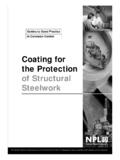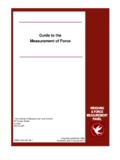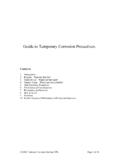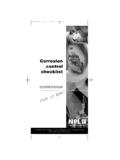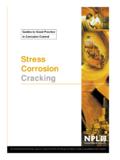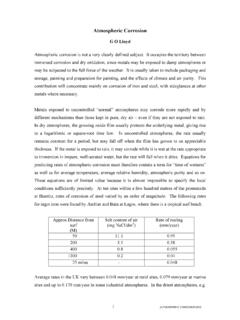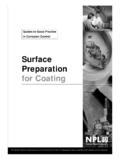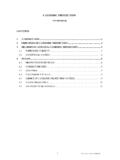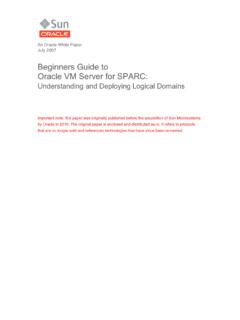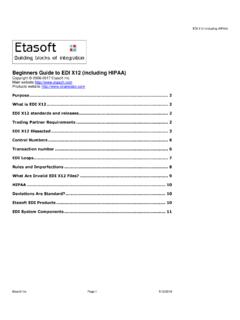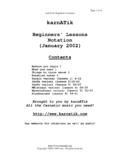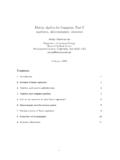Transcription of Beginners Guide to Corrosion - National Physical Laboratory
1 Beginners Guide to Corrosion February 2003 Page 1 of 10 Beginners Guide to Corrosion This document has been prepared by Bill Nimmo and Gareth Hinds of NPL s Corrosion Group from various source material. It is intended to give an introduction to Corrosion and its control in non-technical terms. More technical information is available on other areas of the NPL NCS website. Bill Nimmo and Gareth Hinds NPL February 2003 Beginners Guide to Corrosion February 2003 Page 2 of 10 Corrosion BASICS What follows is a simple explanation of how Corrosion occurs, what the different types are how problems can be solved. It is intended to be used by the non-expert to gain an initial appreciation of the subject before exploring further. 1 HOW DOES IT HAPPEN?
2 WHAT WE ALL KNOW We have all seen Corrosion and know that the process produces a new and less desirable material from the original metal and can result in a loss of function of the component or system. The Corrosion product we see most commonly is the rust which forms on the surface of steel and somehow Steel Rust TWO REACTIONS For this to happen the major component of steel, iron (Fe) at the surface of a component undergoes a number of simple changes. Firstly, Fe Fen+ + n electrons the iron atom can lose some electrons and become a positively charged ion. This allows it to bond to other groups of atoms that are negatively charged. We know that wet steel rusts to give a variant of iron oxide so the other half of the reaction must involve water (H2O) and oxygen (O2) something like this O2 + 2H2O + 4e- 4OH- Beginners Guide to Corrosion February 2003 Page 3 of 10 This makes sense as we have a negatively charged material that can combine with the iron and electrons, which are produced in the first reaction are used up.
3 We can, for clarity, ignore the electrons and write 2Fe + O2 + 2H2O 2Fe(OH)2 Iron + Water with oxygen Iron Hydroxide dissolved in it THE NEXT STEP Oxygen dissolves quite readily in water and because there is usually an excess of it, reacts with the iron hydroxide. 4Fe(OH)2 + O2 2H2O + Iron hydroxide + oxygen water + Hydrated iron oxide (brown rust) THE PROCESS (Five facts) This series of steps tells us a lot about the Corrosion process. (1) Ions are involved and need a medium to move in (usually water) (2) Oxygen is involved and needs to be supplied (3) The metal has to be willing to give up electrons to start the process (4) A new material is formed and this may react again or could be protective of the original metal (5) A series of simple steps are involved and a driving force is needed to achieve them The most important fact is that interfering with the steps allows the Corrosion reaction to be stopped or slowed to a manageable rate.
4 2 UNIFORM Corrosion 30% of failures Beginners Guide to Corrosion February 2003 Page 4 of 10 Uniform Corrosion , as the name suggests, occurs over the majority of the surface of a metal at a steady and often predictable rate. Although it is unsightly its predictability facilitates easy control, the most basic method being to make the material thick enough to function for the lifetime of the component. Uniform Corrosion can be slowed or stopped by using the five basic facts; (1) Slow down or stop the movement of electrons (a) Coat the surface with a non-conducting medium such as paint, lacquer or oil (b) Reduce the conductivity of the solution in contact with the metal an extreme case being to keep it dry. Wash away conductive pollutants regularly.
5 (c) Apply a current to the material (see cathodic protection). (2) Slow down or stop oxygen from reaching the surface. Difficult to do completely but coatings can help. (3) Prevent the metal from giving up electrons by using a more Corrosion resistant metal higher in the electrochemical series. Use a sacrificial coating which gives up its electrons more easily than the metal being protected. Apply cathodic protection. Use inhibitors. (4) Select a metal that forms an oxide that is protective and stops the reaction. Control and consideration of environmental and thermal factors is also essential. 3 LOCALISED Corrosion 70% of failures The consequences of localised Corrosion can be a great deal more severe than uniform Corrosion generally because the failure occurs without warning and after a surprisingly short period of use or exposure.
6 Application of the five basic facts needs greater thought and insight. GALVANIC Corrosion Beginners Guide to Corrosion February 2003 Page 5 of 10 This can occur when two different metals are placed in contact with each other and is caused by the greater willingness of one to give up electrons than the other. Three special features of this mechanism need to operate for Corrosion to occur: The metals need to be in contact electrically One metal needs to be significantly better at giving up electrons than the other An additional path for ion and electron movement is necessary. Prevention of this problem is based on ensuring that one or more of the three features do not exist. Break the electrical contact using plastic insulators or coatings between the metals. Select metals close together in the galvanic series.
7 Prevent ion movement by coating the junction with an impermeable material, or ensure environment is dry and liquids cannot be trapped. PITTING Corrosion Pitting Corrosion occurs in materials that have a protective film such as a Corrosion product or when a coating breaks down. The exposed metal gives up electrons easily and the reaction initiates tiny pits with localised chemistry supporting rapid attack. Control can be ensured by: Selecting a resistant material Ensuring a high enough flow velocity of fluids in contact with the material or frequent washing Control of the chemistry of fluids and use of inhibitors Use of a protective coating Maintaining the material s own protective film. Beginners Guide to Corrosion February 2003 Page 6 of 10 Note: Pits can be crack initiators in stressed components or those with residual stresses resulting from forming operations.
8 This can lead to stress Corrosion cracking. SELECTIVE ATTACK This occurs in alloys such as brass when one component or phase is more susceptible to attacke than another and corrodes preferentially leaving a porous material that crumbles. It is best avoided by selection of a resistant material but other means can be effective such as: Coating the material Reducing the aggressiveness of the environment Use of cathodic protection STRAY CURRENT Corrosion When a direct current flows through an unintended path and the flow of electrons supports Corrosion . This can occur in soils and flowing or stationary fluids. The most effective remedies involve controlling the current by: Insulating the structure to be protected or the source of current Earthing sources and/or the structure to be protected.
9 Applying cathodic protection Using sacrificial targets. MICROBIAL Corrosion This general class covers the degradation of materials by bacteria, moulds and fungi or their by-products. It can occur by a range of actions such as: Beginners Guide to Corrosion February 2003 Page 7 of 10 Attack of the metal or protective coating by acid by-products, sulphur, hydrogen sulphide or ammonia Direct interaction between the microbes and metal which sustains attack. Prevention can be achieved by: Selection of resistant materials Frequent cleaning Control of chemistry of surrounding media and removal of nutrients Use of biocides Cathodic protection. INTERGRANULAR Corrosion This is preferential attack of the grain boundaries of the crystals that form the metal.
10 It is caused by the Physical and chemical differences between the centres and edges of the grain. It can be avoided by: Selection of stabilised materials Control of heat treatments and processing to avoid susceptible temperature range. CONCENTRATION CELL Corrosion (CREVICE) If two areas of a component in close proximity differ in the amount of reactive constituent available the reaction in one of the areas is speeded up. An example of this is crevice Corrosion which occurs when oxygen cannot penetrate a crevice and a differential aeration cell is set up. Corrosion occurs rapidly in the area with less oxygen. The potential for crevice Corrosion can be reduced by: Avoiding sharp corners and designing out stagnant areas Use of sealants Use welds instead of bolts or rivets Selection of resistant materials Beginners Guide to Corrosion February 2003 Page 8 of 10 THERMOGALVANIC Corrosion Temperature changes can alter the Corrosion rate of a material and a good rule of thumb is that 10 oC rise doubles the Corrosion rate.


